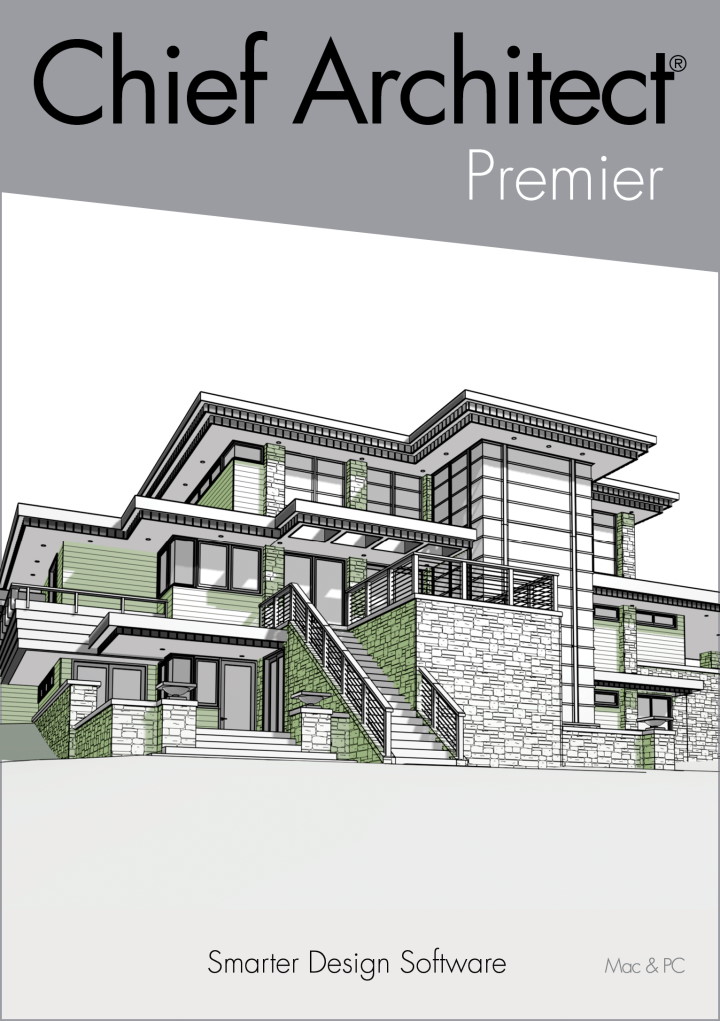Comprehending the Diverse Career Paths Available for Aspiring Architect
As an ambitious Architect, you have a globe of profession courses awaiting you. Each course provides unique difficulties and opportunities to use your imagination and technical knowledge. Whether you're attracted to standard style or the subtleties of sustainable style, there's a niche that lines up with your interests. Comprehending these diverse choices can form your professional trip, yet which instructions will you pick to explore initially?
Traditional Style: Designing Structures and Frameworks
Traditional design concentrates on designing buildings and structures that mix functionality with aesthetic charm. As you discover this area, you'll appreciate the elaborate balance in between form and function. You'll find out to draw inspiration from historical styles, integrating elements like symmetry, materials, and craftsmanship. Your designs can reflect social heritage, showcasing local traditions while meeting contemporary requirements.
You'll create skills in composing, model-making, and website evaluation, permitting you to envision and connect your concepts effectively. Involving with customers, you'll require to comprehend their vision and convert it right into possible styles.
Additionally, constructing codes and sustainability practices are vital in your work, ensuring your frameworks are secure and eco-friendly. As you grow in your profession, you'll find possibilities in household, business, or perhaps remediation projects, each offering unique obstacles. Accepting traditional architecture paves the method for a meeting occupation that admires the past while forming the future.
Urban Preparation: Shaping Areas and Public Spaces
As a hopeful Architect, you can play an important role as an urban coordinator, changing exactly how areas interact and work. By employing community engagement methods, you'll guarantee that homeowners have a voice in shaping their setting. And also, integrating lasting design principles will certainly assist develop areas that not just meet today's demands but additionally safeguard the future.
Duty of Urban Planners
While many might assume of engineers as the sole dreamers behind structures, urban planners play a necessary duty in forming the wider landscape of neighborhoods and public rooms. By teaming up with different stakeholders, you'll assist develop parks, transportation systems, and property areas that promote social communication and accessibility. Your knowledge in spatial layout and community characteristics enables you to visualize future growth while protecting social heritage.
Neighborhood Engagement Strategies
Reliable neighborhood involvement methods are crucial for urban organizers to ensure that the voices of residents are heard and valued in the preparation process. To foster purposeful dialogue, you must prioritize open forums and workshops where area members can share their concepts and issues. Use studies and social networks to reach a more comprehensive target market, making sure diverse point of views are included. Working together with regional organizations can boost count on and promote deeper links. It's essential to provide clear details about suggested projects and decision-making procedures, enabling citizens to really feel informed and equipped. By proactively including and listening responses, you'll create areas that show the neighborhood's needs, inevitably causing even more lasting and successful metropolitan settings. Embrace transparency and continuous discussion for lasting effect.
Sustainable Design Principles
When developing urban spaces, incorporating lasting style principles is essential for producing environments that prosper both ecologically and socially. Think about integrating green spaces, like parks and gardens, to enhance biodiversity and boost air top quality.
Designing with water conservation in mind is likewise crucial-- think concerning rain gardens and absorptive surface areas to handle stormwater. Involving area members throughout the preparation process warranties that the areas you create satisfy their needs and motivate social communication. By accepting these principles, you'll add to dynamic, sustainable city landscapes that benefit every person.

Landscape Design: Producing Sustainable Outdoor Settings
As you check out landscape architecture, you'll uncover crucial style principles that produce lovely and practical exterior areas. Sustainable practices play a vital function in guaranteeing these environments prosper while decreasing environmental influence. Plus, you'll locate a selection of job possibilities that enable you to make an actual distinction in exactly how individuals communicate with nature.
Layout Principles in Landscape
Understanding style principles in landscape style is crucial for producing sustainable exterior atmospheres that balance with nature. You'll need to ponder elements like range, proportion, and balance to assure your designs really feel natural and inviting. Integrating indigenous plants not just improves biodiversity but additionally decreases water use, making your landscape resistant. Think of the circulation of space and exactly how individuals interact with it; paths and seating areas ought to invite expedition and leisure. Additionally, take notice of seasonal changes, developing with materials that match the environments year-round (Architect). By prioritizing sustainability and visual appeals, you can produce exterior rooms that enrich the community and advertise well-being. Accepting these principles will certainly establish a solid structure for your profession in landscape design.
Lasting Practices Review
Lasting techniques in landscape style not just concentrate on aesthetics however likewise prioritize ecological health and source preservation. By incorporating indigenous plants, you improve biodiversity and reduce the need for chemical read more plant foods and pesticides. Carrying out reliable irrigation systems helps preserve water and lessens overflow, safeguarding nearby ecosystems. You can design rooms that promote dirt wellness, such as practicing and making use of natural products permaculture principles. In addition, integrating green framework, like rain gardens and permeable sidewalks, aids in stormwater administration and decreases urban heat. When you develop outside settings with sustainability in mind, you add to a much healthier world and supply spaces that promote community connection. Eventually, these methods assure your designs benefit both individuals and the atmosphere for several years to come.
Occupation Opportunities Expedition
With a strong structure in sustainable techniques, landscape architecture supplies a selection of career courses that enable you to make a significant impact on the setting. Urban coordinators frequently team up with landscape designers to create environment-friendly areas in urban setups, improving city livability. If you're passionate about education, consider coming to be a landscape architecture instructor, motivating future generations.
Sustainable Design: Concentrating On Eco-Friendly Practices
As you explore your occupation in architecture, welcoming environmentally friendly practices can set you apart in an affordable more info field. Lasting design concentrates on creating structures that minimize ecological impact while improving occupant wellness. By including sustainable products, energy-efficient systems, and sustainable building methods, you'll add to a greener future.
Begin by getting expertise of green qualifications like LEED or BREEAM, which can reinforce your qualifications. Consider exactly how all-natural light, air flow, and thermal performance can maximize layout. Collaborate with designers and ecological professionals to innovate options that lower waste and conserve resources.
Do not forget the value of area involvement-- engaging regional stakeholders can influence layouts that balance with the setting. As customers increasingly prioritize sustainability, your experience in environmentally friendly practices will certainly not only attract projects however likewise meet your interest for responsible architecture. Embrace this essential element of the occupation, and see your occupation flourish.
Historic Preservation: Shielding and Restoring Cultural Heritage
While you commence on your building trip, take into consideration the essential role of historic preservation in maintaining our social heritage. This area concentrates on the defense and restoration of significant structures, websites, and structures that tell the stories of our past. By taking part in historic conservation, you'll aid secure the architectural legacy that shapes area identification.
As a historic preservation Architect, you'll assess historic relevance and evaluate the condition of frameworks. You'll work very closely with chroniclers and guardians to guarantee genuine remediation techniques are utilized. This career path permits you to blend creativity with research, allowing you to develop solutions that appreciate original materials and workmanship.
Your job not only adds to sustainability by reusing existing buildings yet likewise cultivates a sense of pride within neighborhoods. Welcoming this path will certainly help you end up being a guardian of history, maintaining the stories and aesthetics that enhance our lives.
Inside Architecture: Enhancing Indoor Spaces
Historical preservation and indoor architecture both share a dedication to boosting the built atmosphere, but they concentrate on various aspects. While historical conservation emphasizes maintaining a framework's cultural and historic value, interior style zeroes in on enhancing interior rooms for performance and visual appeals.
As an ambitious Architect, you'll find that interior design enables you to mix imagination with technological abilities. You'll make spaces that not only look great however additionally promote comfort and efficiency. This field includes comprehending exactly how light, color, and materials connect within a room, affecting mood and usability.
You'll service different jobs, from property homes to business workplaces, making certain that each setting meets the needs of its residents. By prioritizing user experience, you can transform interiors right into functional and inspiring rooms, making a significant impact on just how individuals interact with their environments. Welcome the possibility to improve indoor environments and form the method people live and work.
Industrial Layout: Combining Performance With Visual Appeals
Industrial style plays a crucial duty in producing products that seamlessly blend aesthetics with capability, making sure that what you utilize daily is not just aesthetically attractive however also sensible. As a hopeful Architect, you can engage on your own in this field, focusing on making every little thing from furniture to customer electronics. Your job includes understanding customer requirements, materials, and making processes, enabling you to develop ingenious solutions that improve everyday experiences.
In commercial here style, you'll commonly work together with suppliers, engineers, and marketing professionals, making sure that your designs are not only beautiful however additionally feasible. You'll discover to balance type and feature, prioritizing functionality without giving up style. By developing your abilities in mapping out, 3D modeling, and prototyping, you'll be well-appointed to bring your concepts to life. This job path uses a vibrant environment where creative thinking fulfills practicality, making it a gratifying option for engineers interested in shaping the items of tomorrow.
Often Asked Questions
What Educational Credentials Do I Required to End Up Being a Designer?
To become an engineer, you'll require an expert degree in style, generally a Bachelor's or Master's. Additionally, you'll need to complete an internship and pass the Architect Enrollment Assessment to exercise legitimately.
Are There Certification Demands for Different Building Profession Paths?
Yes, there're certification requirements for numerous architectural courses. Architect. You'll need to pass tests, total internships, and sometimes seek specialized training, depending upon your picked focus, like landscape style, metropolitan layout, or historical preservation
What Software Program Skills Are Essential for Designers Today?

Just How Can I Gain Practical Experience While Examining Architecture?
You can obtain functional experience by interning at architectural companies, taking part in style competitions, offering for community tasks, or working together with classmates on real-world tasks. These chances enhance your abilities and build beneficial connections in the sector.
What Task Opportunities Exist Outdoors Standard Architecture Firms?
You can discover various work opportunities outside standard design firms, like city planning, interior decoration, landscape design, construction administration, realty development, and even functions in sustainability consulting. Each deals distinct obstacles and rewards.
Whether you're drawn to typical design or the subtleties of lasting design, there's a particular niche that aligns with your rate of interests.When making metropolitan rooms, integrating lasting layout principles is vital for developing environments that thrive both environmentally and socially.As you discover landscape architecture, you'll discover necessary layout principles that create stunning and useful outdoor rooms.Recognizing style concepts in landscape style is essential for creating sustainable outside atmospheres that integrate with nature.In commercial layout, you'll usually collaborate with suppliers, marketing experts, and designers, ensuring that your layouts are not just attractive yet additionally possible.